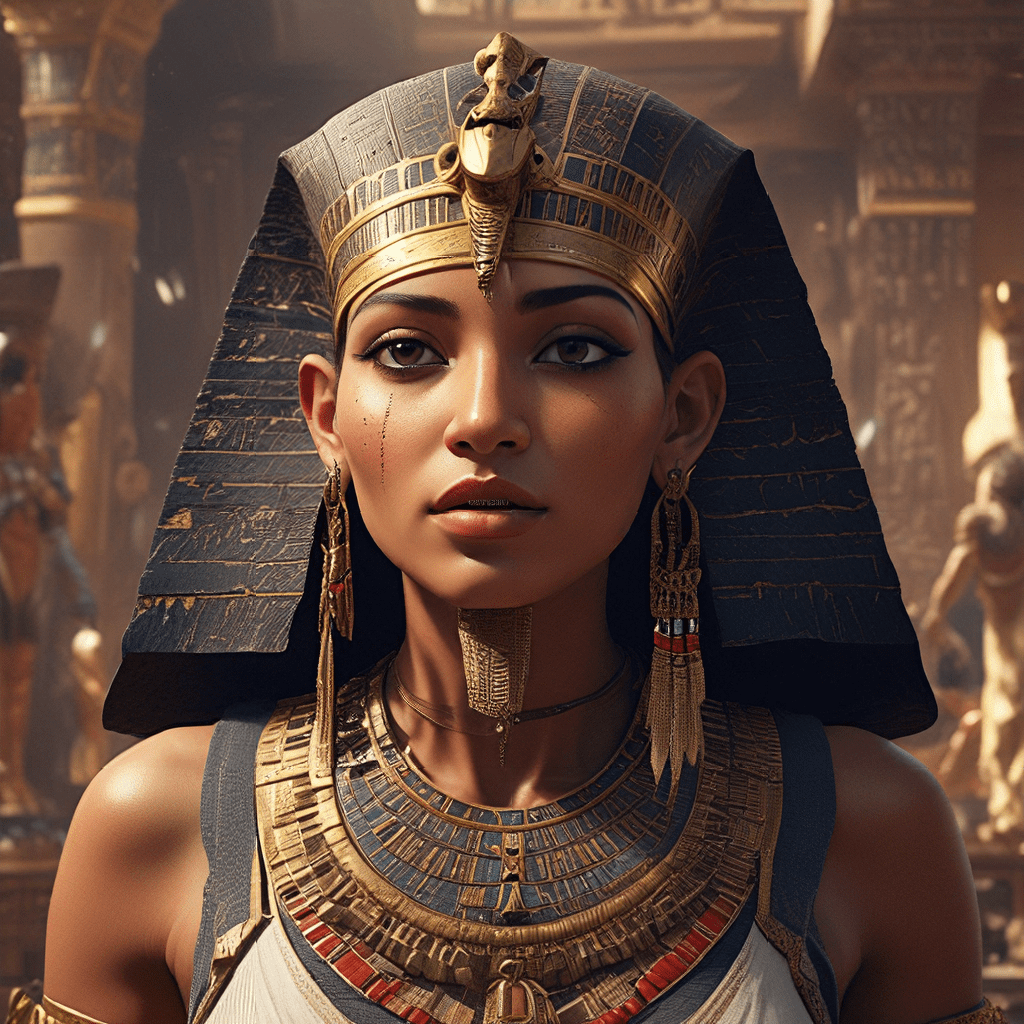The Opening of the Mouth Ceremony: A Journey into the Egyptian Afterlife Rituals
1. Introduction: Unveiling the Mysteries of the Afterlife
Ancient Egyptians held profound beliefs about the afterlife, viewing death as a transition to a new realm where the soul could continue to exist. The journey into this afterlife was a complex one, meticulously planned and executed through elaborate rituals. Among the most vital of these rituals was the Opening of the Mouth Ceremony, an essential step in ensuring the deceased’s well-being and eternal existence.
This ceremony played a crucial role in the funerary process, serving as a symbolic bridge between the realms of the living and the dead. It was believed to enable the deceased to experience the joys and comforts of the afterlife, fully engaging with the spiritual world.
2. The Significance of the Mouth Opening
Ancient Egyptians believed that each person possessed a ‘ka’, a spiritual essence that survived the physical body’s demise. To thrive in the afterlife, the ‘ka’ needed to be able to interact with its surroundings—to taste, smell, see, hear, and speak. The Opening of the Mouth Ceremony addressed this need, restoring these vital senses to the deceased.
The ceremony was not merely a symbolic act but a tangible connection between the living and the dead. By opening the deceased’s mouth, the priest essentially ‘reconnected’ the deceased to the realm of the living, allowing them to participate in the afterlife world.
3. The Ritual Components: A Symbolic Act
The Opening of the Mouth Ceremony involved specific tools and objects, each carrying profound symbolic meaning. An adze, a chisel, and a symbolic ‘knife’ were used to perform the ritual. The adze, resembling a small axe, was used to open the mouth, while the chisel was used to open the eyes, ears, and nostrils. The ‘knife’ was a wooden or metal implement used to symbolize the act of cutting through the barrier between life and death.
A skilled priest, a conduit between the human and the divine, performed the ceremony. He would invoke the names of specific gods and goddesses, primarily Osiris, the god of the underworld. Osiris, who had experienced death and resurrection, was believed to hold the key to eternal life. The priest’s role was to act as a mediator, ensuring the deceased’s passage into the afterlife and their favor in the eyes of the gods.
4. The Process: Reconnecting with Life
The ceremony began by placing the deceased’s mummy on a special table. The priest would then use the adze or chisel to gently ‘open’ the mouth, eyes, nostrils, and ears. These were not literal openings, but symbolic gestures representing the restoration of the senses. The priest would also touch the deceased’s limbs with the tools, ensuring their ability to move and function in the afterlife.
Throughout the ceremony, the priest uttered specific incantations, ancient texts believed to hold magical power. These incantations, filled with prayers and pronouncements, called upon the gods to grant the deceased the necessary abilities for eternal life. The act of ‘opening’ was not simply a physical act but a spiritual one, a symbolic reawakening of the deceased’s ‘ka’.
5. The Significance of the Ceremony for the Deceased
The Opening of the Mouth Ceremony was a pivotal moment in the afterlife journey. It marked the deceased’s ability to experience the afterlife fully, enabling them to breathe, speak, see, hear, and smell in the spiritual realm. This restoration of the senses allowed them to engage with the world of the gods, participate in afterlife feasts, and enjoy the beauty of the ‘Field of Reeds’—a paradise envisioned by the ancient Egyptians.
The ceremony’s ultimate goal was to guide the deceased towards eternal life, ensuring their passage into the realm of the gods and their continuous existence beyond the mortal realm.
6. The Context: A Monumental Event
The Opening of the Mouth Ceremony was not a solitary event but intricately woven into the broader context of ancient Egyptian funerary rituals. It was often performed in conjunction with other ceremonies, such as the embalming process and the burial of the deceased in their tomb. The ceremony’s significance extended beyond the individual, reflecting the profound importance of the afterlife in ancient Egyptian society.
The ceremony’s performance in the pharaoh’s tomb further emphasized its monumental nature. It reflected the belief in the pharaoh’s divine status and their role as intermediaries between the human and divine realms. The ceremony was a testament to the pharaoh’s power and authority, ensuring their continued reign in the afterlife.
7. The Ceremony’s Transformation Through Time
The Opening of the Mouth Ceremony, like many ancient Egyptian practices, evolved over time. While the core elements remained consistent, the specific rituals and symbolic objects varied across different historical periods. The ceremony’s adaption reflected the evolving beliefs and understanding of the afterlife, showcasing the dynamic nature of ancient Egyptian religion.
Despite its transformation, the Opening of the Mouth Ceremony remained a profound testament to the ancient Egyptians’ enduring belief in the afterlife and their dedication to ensuring a peaceful transition for the deceased into the eternal realm.




